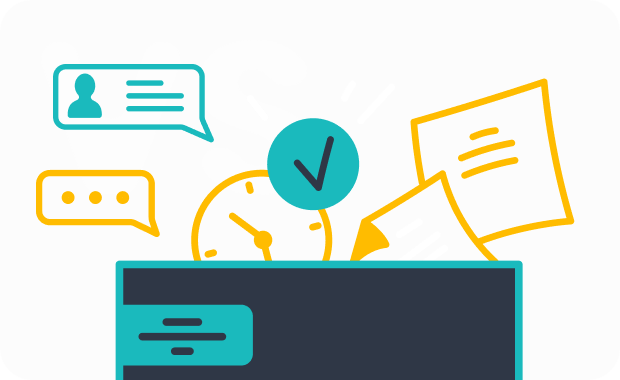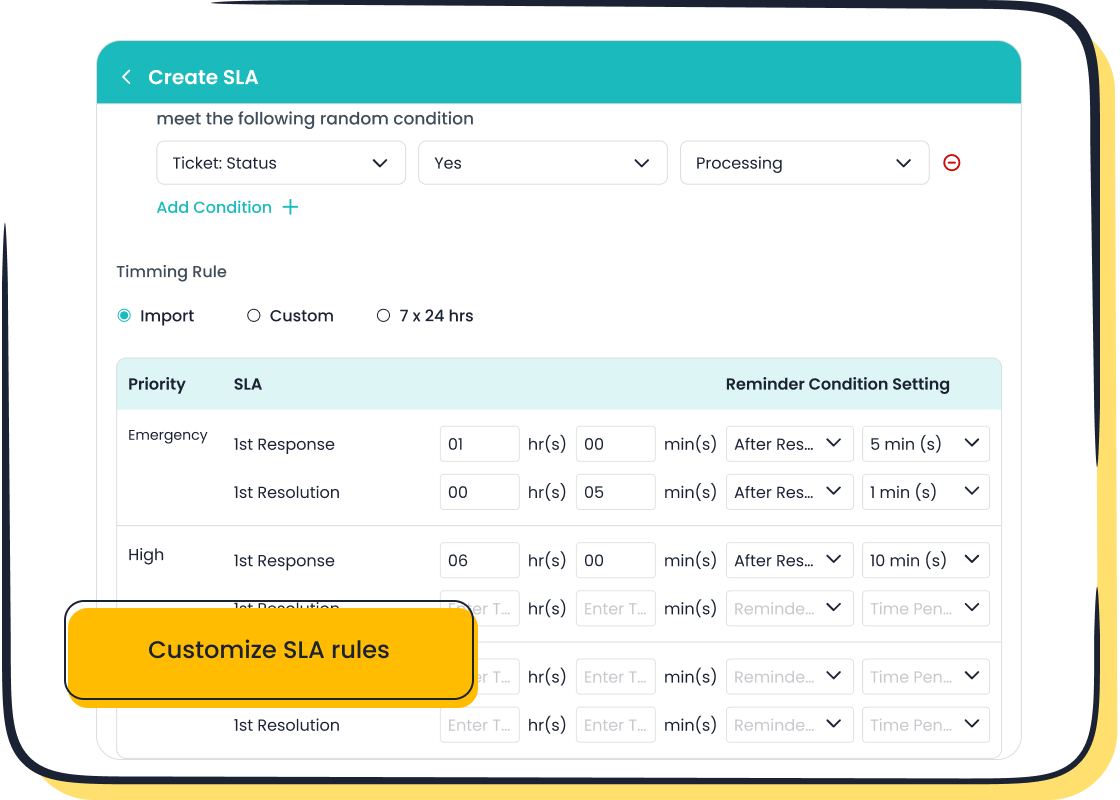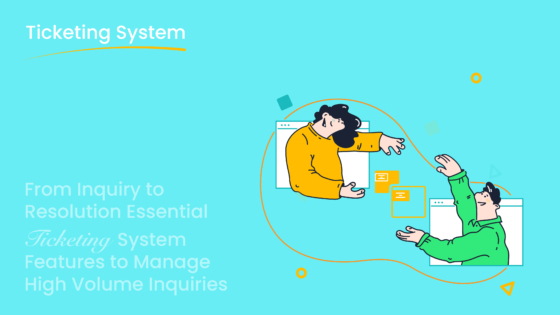10 Tips for a Smooth Zendesk Alternative Transition

Switching from Zendesk to a new platform might feel overwhelming, but it doesn’t have to be. With the right plan, you can make the process smooth and stress-free. A structured migration strategy offers plenty of benefits. For example, it boosts efficiency by automating tasks and ensures your team gets the training they need to thrive in the new system. Plus, it helps you monitor performance and make improvements along the way.

If you’re looking for a Zendesk alternative, Sobot is a game-changer. Its Ticketing System streamlines communication across channels, automates workflows, and keeps everything organized. Whether you’re managing email, chat, or voicemail, Sobot ensures your team stays productive and your customers stay happy.
Evaluate Your Current Zendesk Setup
Identify Key Features and Workflows
List the tools and integrations your team relies on.
Before switching to a Zendesk alternative, take a close look at the tools and integrations your team uses daily. These might include ticketing systems, multi-channel support, or even automation tools. For example, Zendesk’s ticketing system is popular because it gathers customer queries from multiple channels into one dashboard. This setup makes it easier for agents to track and resolve issues efficiently.
Here’s a quick list of common features businesses rely on:
- Ticketing system
- Multi-channel support
- Self-service knowledge base
- Analytics and dashboards
- Automation, workflows, and macros
- Customization and integrations
- SLA management
- Triggers and notifications
If your team depends on these features, you’ll want to ensure your new platform offers similar or better functionality. Sobot’s Ticketing System, for instance, integrates email, voicemail, and chat into one platform. It also automates ticket routing and provides trusted analytics, making it a strong contender for your next step.
Document your current support processes for reference.
Take time to map out your current workflows. Write down how tickets are created, assigned, and resolved. Note any specific steps your team follows to handle customer inquiries. This documentation will serve as a blueprint when setting up your new system.
For example, if your team uses SLA management to prioritize tickets, make sure your new platform supports this feature. Sobot’s Ticketing System allows you to set response and resolution times based on priority, ensuring no ticket falls through the cracks. Having these details on hand will make the transition smoother and help your team adapt faster.
Assess Pain Points
Pinpoint limitations in Zendesk that prompted the switch.
Think about why you’re considering a Zendesk alternative. Are there specific challenges holding your team back? Common complaints include limited customization, high costs, or difficulty integrating with other tools. Identifying these pain points will help you focus on what matters most in your new platform.
For instance, if automation is a priority, look for a system that simplifies workflows. Sobot excels here with features like custom triggers and time-triggered actions. These tools reduce manual effort and improve efficiency, making it easier to meet customer expectations.
Prioritize must-have features in your new platform.
Once you’ve identified the gaps, list the features you can’t live without. Businesses often look for automation, omnichannel support, and real-time analytics. Pricing and ease of use also play a big role.

Sobot’s Ticketing System checks many of these boxes. It offers multilingual support, SLA reminders, and seamless integration with platforms like Shopify. These features ensure your team stays productive while delivering top-notch customer service. By prioritizing what you need, you’ll find a platform that truly fits your business.
Research and Select the Best Zendesk Alternative
Compare Platforms
Evaluate Sobot’s Ticketing System against your business needs.

When choosing a zendesk alternative, start by comparing features that align with your goals. Sobot’s Ticketing System stands out for its unified platform that integrates email, voicemail, and chat. It automates ticket routing and SLA management, ensuring faster response times. If your team values efficiency, Sobot’s AI-powered tools like custom triggers and time-triggered actions can save hours of manual work.
Other platforms like Freshdesk and Zoho Desk also offer robust features. Freshdesk is known for its simplicity, while Zoho Desk provides customizable templates. However, Sobot’s multilingual support and seamless e-commerce integrations make it a versatile choice for global businesses. By evaluating these features, you can determine which platform best meets your needs.
Consider scalability, pricing, and customer support options.
Scalability is crucial when selecting a zendesk alternative. Sobot’s flexible system adapts to your growing demands, whether you’re scaling up or refining workflows. Its pricing structure is transparent, with no hidden fees, making it suitable for businesses of all sizes.
You should also assess customer support. Sobot offers 24/7 assistance, ensuring your team gets help whenever needed. Platforms like Help Scout are praised for collaboration features, but Sobot’s comprehensive analytics and smart notifications provide deeper insights into performance. These factors make Sobot a reliable choice for long-term growth.
Request Demos and Trials
Test Sobot’s interface and features with your team.
Before committing to a zendesk alternative, request a demo or trial. Sobot offers an intuitive interface that’s easy to navigate. During the trial, explore features like ticket merging, canned responses, and SLA reminders. These tools simplify workflows and improve productivity.
Involve your team in testing. Let them handle real customer queries using Sobot’s Ticketing System. This hands-on experience will reveal how well the platform fits your daily operations. Demos also allow you to ask questions and get tailored solutions, ensuring the platform meets your unique needs.
Gather feedback from stakeholders to make an informed decision.
Feedback is essential when evaluating a zendesk alternative. Identify key stakeholders, such as team leads and agents, and gather their input. Use surveys or meetings to collect opinions on usability, features, and overall satisfaction.
Analyze the feedback to identify trends. For example, if multiple team members highlight Sobot’s multilingual support as a game-changer, prioritize this feature. Show stakeholders how their feedback influences the decision. This approach builds trust and ensures everyone feels involved in the transition process.
Plan a Comprehensive Transition Strategy
Create a Transition Timeline
Define clear milestones for each phase of the migration.
A well-structured transition schedule is the backbone of a smooth migration. Start by setting realistic milestones and deadlines for each phase. For example, you might allocate a week for data auditing, another for testing, and a final phase for full implementation. Breaking the process into smaller steps makes it easier to track progress and avoid delays.
Think about potential risks, like data loss or downtime, and plan how to handle them. For instance, you could back up all critical data before migration begins. Use this time to outline the high-level structure of your new system. Define key areas like navigation, user roles, and content organization. This blueprint will guide the setup of your new platform, ensuring everything runs smoothly from day one.
Assign responsibilities and allocate resources effectively.
Assigning clear roles is just as important as setting milestones. Identify who will oversee each part of the transition schedule. For example, one team member could handle data migration while another focuses on training. This division of labor ensures no task gets overlooked.

Make sure your team has the resources they need. If you’re using Sobot’s Ticketing System, take advantage of its automation tools to reduce manual effort. Features like custom triggers and SLA management can save time and improve accuracy. Communicate regularly with stakeholders to keep everyone informed about progress and challenges.
Prepare Your Team
Communicate the reasons for switching to Sobot.
Your team needs to understand why this change is happening. Share the benefits of Sobot’s Ticketing System, like its ability to unify communication channels and automate workflows. Explain how these features will make their jobs easier and improve customer satisfaction.
Timing matters here. Avoid introducing the change during busy periods. Instead, choose a time when your team can focus on learning the new system. Highlight the long-term advantages, like faster response times and better analytics. This approach will help your team embrace the transition.
Provide training on Sobot’s Ticketing System and other tools.
Training is key to a successful migration. Start by identifying champions within your team—those who can advocate for the new system and help others adapt. These champions can lead workshops or one-on-one sessions to ensure everyone feels confident using Sobot’s tools.
Focus on practical, hands-on training. Let your team practice creating tickets, setting priorities, and using canned responses. Sobot’s intuitive interface makes this process straightforward. Provide resources like user guides or video tutorials for ongoing support. With the right preparation, your team will hit the ground running.
Migrate Data with Precision
Audit and Organize Your Data
Remove outdated or irrelevant information.
Before diving into data migration, take a moment to clean house. Outdated or irrelevant data can clutter your system and slow down the migration process. Start by identifying duplicate records, incomplete entries, or information that no longer serves your business. For example, old customer tickets that have been resolved for years might not need to be transferred. Removing this unnecessary data ensures your new system stays streamlined and efficient.
Data quality matters. Address issues like accuracy and completeness to avoid errors post-migration. Involve key stakeholders to validate what’s essential and what can be left behind. This step not only saves time but also sets the stage for a smoother transition.
Structure data to align with Sobot’s Ticketing System.
Once you’ve cleaned up your data, it’s time to organize it. Think about how your data will fit into Sobot’s Ticketing System. For instance, categorize tickets by priority, channel, or customer type to match Sobot’s features like SLA management and ticket filters. Mapping your data to the new system ensures everything integrates seamlessly.
Planning ahead is key. Develop a strategy that outlines how your data will be structured and transformed. This preparation minimizes compatibility issues and helps your team hit the ground running once the migration is complete.
Leverage Sobot’s Migration Tools
Use automated tools for seamless data transfer.
Manual data migration can be tedious and error-prone. That’s where Sobot’s automated migration tools come in. These tools streamline the process, reducing the time needed to transfer data by up to 80%. Automation also minimizes human errors, ensuring your data remains accurate and intact.
For example, Sobot’s system can automatically route tickets to the right agents based on custom triggers. This feature not only saves time but also enhances productivity. By leveraging automation, you can focus on strategic tasks while the system handles the heavy lifting.
Test the migration process with a small dataset to ensure accuracy.
Testing is a crucial step in any data migration project. Start with a small dataset to identify potential issues before scaling up. This approach helps you validate data accuracy, maintain consistency, and comply with security policies.
Create a detailed test plan that outlines what you’ll test and the expected outcomes. For instance, check if ticket priorities and customer details transfer correctly into Sobot’s Ticketing System. Iterative testing allows you to refine your strategy, ensuring a flawless migration when you move the full dataset.
By taking these steps, you’ll reduce risks like downtime or data loss, setting your team up for success in the new platform.
Test and Optimize Your New Platform
Conduct a Soft Launch
Roll out Sobot to a small team or department first.
Start small when introducing Sobot’s Ticketing System. Choose a single team or department to test the platform before rolling it out company-wide. This approach minimizes risks and gives you a chance to identify any issues early. For example, you can test how well Sobot’s automated ticket routing works or how its SLA reminders improve response times.
A soft launch offers several benefits:
- 🛡️ Risk Reduction: Spot and fix problems before a full-scale launch.
- 💬 Valuable Feedback: Early users can share insights to refine the system.
- ⚙️ Performance Testing: See how the platform handles real-world scenarios.
- 💰 Cost-Effective: Address issues early to save on post-launch fixes.
This step ensures a smoother transition and sets the stage for success.
Collect feedback and address any issues promptly.
Feedback is your best friend during a soft launch. Use surveys or direct communication to gather opinions from your team. Ask about their experience with Sobot’s features, like ticket merging or multilingual support. Track user behavior to see which tools they use most and where they face challenges.
For example, monitor how quickly agents resolve tickets or if there are any delays in ticket routing. Addressing these issues promptly shows your team you value their input and helps build trust in the new system. Plus, it ensures the platform is fully optimized before the full rollout.
Customize and Integrate
Tailor Sobot’s Ticketing System to match your workflows.

Customization is key to making Sobot work seamlessly for your business. Start by mapping your existing workflows and identifying areas for improvement. For instance, if your team prioritizes tickets based on urgency, use Sobot’s custom triggers to automate this process.
Here’s how you can tailor the platform:
- Define best practices to streamline operations.
- Use automation tools like SLA reminders to boost efficiency.
- Create templates for common ticket types to save time.
By aligning Sobot’s features with your workflows, you’ll enhance productivity and ensure a smooth transition.
Integrate with other tools for a unified customer support experience.
Integrations make all the difference when adopting a new platform. Sobot’s Ticketing System connects with tools like email, voicemail, and e-commerce platforms such as Shopify. This integration ensures your team has all the information they need in one place.
For example, linking Sobot with your CRM allows sales and support teams to share insights effortlessly. Developers can also access support logs to resolve technical issues faster. These integrations create a unified system that improves collaboration and enhances customer satisfaction.
Drive Team Adoption and Engagement
Provide Ongoing Training
Offer workshops and resources for continuous learning.
Switching to a new platform like Sobot’s Ticketing System can feel overwhelming for your team. That’s why ongoing training is essential. Start by organizing hands-on workshops where team members can practice using features like ticket merging, SLA reminders, and custom triggers. These sessions help build confidence and familiarity with the system.
Supplement workshops with resources like video tutorials, written guides, and FAQs. Make these materials accessible on multiple devices so your team can learn anytime, anywhere. For example, Sobot’s intuitive interface makes it easy to create step-by-step guides tailored to your workflows. Offering live chat or help desk support ensures your team gets answers quickly when they encounter challenges.
Tip: A user-friendly learning management system (LMS) can streamline training and make it more engaging for your team.
Highlight the benefits of Sobot’s Ticketing System to encourage usage.
Your team needs to see how Sobot’s Ticketing System makes their work easier. Highlight features like automated ticket routing and multilingual support, which save time and reduce manual effort. Share success stories, such as OPPO’s 83% chatbot resolution rate, to show how Sobot improves efficiency and customer satisfaction.
Focus on the long-term benefits. For instance, Sobot’s trusted analytics help agents track performance and identify areas for improvement. When your team understands how these tools enhance their productivity, they’ll be more motivated to adopt the platform.
Monitor Usage and Performance
Track key metrics to measure success and identify gaps.
Measuring success is crucial to ensure your team fully adopts the new platform. Track metrics like productivity, customer retention rate, and net promoter score (NPS). These indicators reveal how well Sobot’s Ticketing System supports your goals.
| Metric | Description |
|---|---|
| Productivity | Efficiency measurement calculated by dividing total output by total input. |
| Customer retention rate | Indicates how many customers remain over a set period, essential for evaluating platform success. |
| Net promoter score (NPS) | Measures customer loyalty and satisfaction based on likelihood to recommend the product. |
Regularly review these metrics to identify gaps. For example, if productivity dips, investigate whether additional training or workflow adjustments are needed.
Address resistance or challenges with proactive solutions.
Resistance to change is common. Some team members may feel hesitant about adopting new technology. To address this, involve them in the transition process. Share a clear training and adoption plan that outlines the platform’s value and equips them with the skills they need.
Provide step-by-step guidance to simplify complex features. For example, demonstrate how Sobot’s SLA reminders ensure no ticket gets overlooked. Celebrate small wins, like faster ticket resolution times, to build confidence. By tackling challenges head-on, you’ll foster a positive attitude toward the new system.
Implement Post-Migration Strategies
Audit the New System
Verify data accuracy and system functionality.
After migrating to Sobot’s Ticketing System, you need to ensure everything works as expected. Start by verifying that all your data transferred correctly. Check if customer details, ticket histories, and SLA settings are accurate. This step prevents errors from disrupting your workflows.

Next, test the system’s functionality. For example, confirm that automated ticket routing sends issues to the right agents. Use Sobot’s trusted analytics to monitor performance and identify any inconsistencies. A structured internal audit can help you cover all bases.
| Area of Focus | Internal Audit Considerations | Risks | Possible Focus Areas |
|---|---|---|---|
| Report Design | - Have key reports been reviewed and validated? | - Data integrity issues with reporting. | - Ensure user acceptance testing includes data validation. |
| Application Security Design | - Are security features aligned with corporate policies? | - Costly manual workarounds due to security failures. | - Review user access lists before going live. |
| Operational Readiness | - Is there a communication plan for stakeholders? | - IT is not prepared to assume ownership responsibilities. | - Define clear service level arrangements (SLAs) before Go-Live. |
By addressing these areas, you’ll ensure Sobot’s platform operates smoothly and securely.
Identify areas for further optimization.
Once the system is live, look for ways to improve. Use Sobot’s analytics to track metrics like ticket resolution times and agent productivity. If you notice bottlenecks, adjust workflows or explore features like time-triggered actions.
For example, if agents struggle with multilingual tickets, Sobot’s translation tools can simplify communication. Regular audits and performance reviews will help you refine the system over time, ensuring it continues to meet your needs.
Gather Feedback and Refine
Conduct surveys to assess user satisfaction.
Your team’s feedback is invaluable after switching to a Zendesk alternative like Sobot. Create surveys to gauge their experience. Ask questions about usability, feature effectiveness, and overall satisfaction.
For instance, you might ask:
- How easy is it to navigate Sobot’s interface?
- Are automated workflows improving efficiency?
- What challenges are you facing with the new system?
Use this feedback to identify strengths and weaknesses. If agents praise Sobot’s canned responses but struggle with ticket merging, focus your next training session on that feature. Listening to your team ensures they feel supported and engaged.
Use feedback to improve workflows and processes.
Feedback isn’t just for identifying problems—it’s a tool for growth. Analyze survey results alongside performance data to spot trends. For example, if resolution times are slower than expected, review your ticket routing rules.
Here’s a step-by-step approach:
- Gather ongoing feedback from your team.
- Conduct a post-migration evaluation to discuss successes and challenges.
- Focus on learning and improving, not assigning blame.
Sobot’s customizable features make it easy to adapt. Adjust triggers, templates, or SLA settings to align with your team’s needs. Over time, these refinements will enhance efficiency and customer satisfaction, solidifying Sobot as your go-to Zendesk alternative.
Switching to a new platform doesn’t have to be overwhelming. By focusing on preparation, execution, and post-migration strategies, you can ensure a smooth transition. Sobot’s Ticketing System simplifies this process with features like multilingual support, proactive engagement tools, and robust integrations. It’s designed to enhance customer support while boosting your team’s efficiency.
Ready to explore a reliable zendesk alternative? Sobot offers everything you need to streamline workflows and improve customer satisfaction. Take the next step by testing its powerful analytics, customizable reporting, and seamless ticket management. Your team—and your customers—will thank you.
FAQ
What makes Sobot a great Zendesk alternative?
Sobot offers a unified platform for managing email, voicemail, and chat. Its Ticketing System automates workflows, supports multilingual communication, and integrates with tools like Shopify. With 99.99% system stability and trusted analytics, Sobot ensures efficiency and reliability for businesses of all sizes.
Tip: Sobot’s SLA reminders help you meet customer expectations by prioritizing urgent tickets.
Can Sobot handle multilingual customer support?
Yes! Sobot’s Ticketing System supports multiple languages, making it perfect for global businesses. Customers can submit tickets in their preferred language, and agents can respond seamlessly. This feature ensures clear communication and boosts customer satisfaction, no matter where your audience is located.
Example: OPPO achieved a 94% positive feedback rate using Sobot’s multilingual tools.
How does Sobot simplify ticket management?
Sobot automates ticket creation, routing, and prioritization. Features like custom triggers, SLA management, and ticket merging save time and reduce manual effort. Agents can focus on resolving issues faster, improving productivity and customer satisfaction.
Fact: Automation reduces ticket handling time by up to 80%, according to industry studies.
Is Sobot suitable for small businesses?
Absolutely! Sobot’s flexible pricing and scalable features make it ideal for businesses of all sizes. Small teams benefit from its user-friendly interface, while growing companies can leverage advanced tools like AI-powered ticketing and trusted analytics.
Note: Sobot’s transparent pricing ensures no hidden fees, making it a cost-effective Zendesk alternative.
How can I try Sobot before committing?
You can request a demo or trial to explore Sobot’s features. Test tools like SLA reminders, canned responses, and multilingual support with your team. This hands-on experience helps you see how Sobot fits your workflows and improves customer support.
Callout: Visit Sobot’s website to schedule your demo today!
See Also
Essential Strategies for Success in Depop Live Chat
Ten Ways to Enhance Customer Satisfaction in Live Chat
Ten Guidelines for Selecting Social Media Support Tools